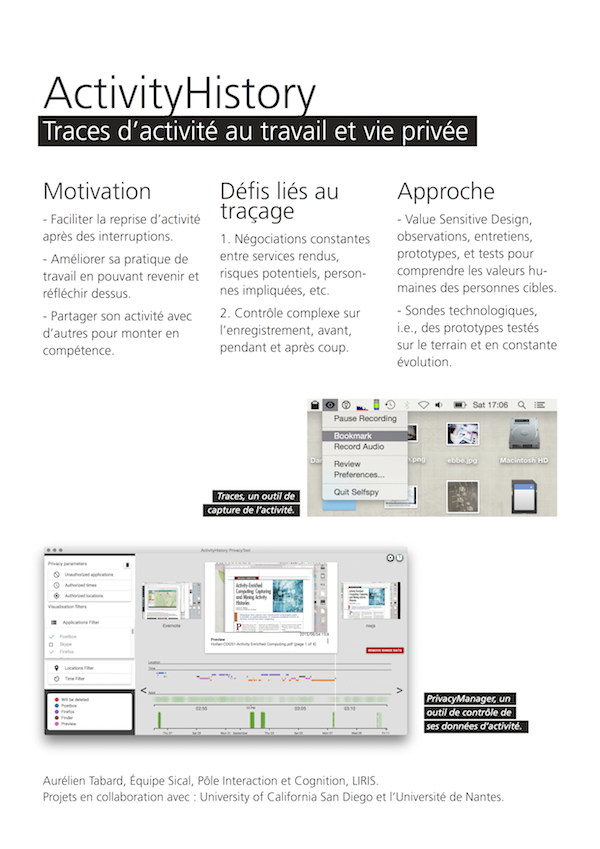Resources for HCI students
Pages to look at before this one
Getting started working in our lab (especially for master students), follow Romain Vuillemot's instructions.
When it comes to attitude and organization, also check Michael Berstein's Getting Started Page
Shengdong Zhao's page is full of useful ressources and tips
On research and phd advice, Smitha Milli set up a good list of resources but mostly targeted at north americans. Jakob Bardram's Art of doing a Ph.D. has advice better suited to European 3 years long phds. Also, have a look at Philip Guo's Ph.D. Grind (or here and here for even more tips).
Time and project management
This section is still in progress, input welcome.
- On lean work: Getting Real
- On focusing: Deep Work
Communication
Paper writing
- Get a copy Strunk and White's The Elements of Style (pdf).
- Most of the papers I work on are started in Google Docs and moved to ShareLatex later on (i.e. learn Latex).
Posters
There are two competing goals when designing a conference poster: 1. Getting people to come check it out and talk to you (this is the main one); 2. Make people curious about your work, when you're not in front of the poster, either so that they come back later, or that they check stuff online. It is not a mini-paper
Patrick Baudisch set up a web page on posters for UIST, it is relevant for any other conference. He wisely suggests to let Google give you some more tips.
Collin Purrington has a nice article on designing conference posters. He also manages the Poster Sessions and Pimp my poster Flickr groups.
On design:
This is an endless topic, but here are some universal tips that would work for any non designer: lessons from swiss style graphic design by Smashing Magazine.
Check this curated list of great infographics, look and get inspired!
Tools of the trade:
You should use a tool that lets you organize information and print it nicely. So using a software made for detailed page layout, text flowing around images and handling of high-res pictures is best. I'm currently using Figma or Keynote.
- If you have the Adobe Suite, InDesign is best. Scribus is a good Free Software alternative, LaTex is always here to help if you find a nice template.
- You can also use a Vector Graphics tool like Figma, Illustrator or Inkscape.
- On Macs, Omnigraffle does a great job and is much easier to learn; Pages comes with some very basic poster templates. Power Point is widely used often for the worst, it is really worth your time learning Scribus or Inkscape. On Linux go for Scribus, Latex or Inkscape.
Some extra links:
- Two lists of very practical things size of the font, quality of the images, conversion to pdf...Poster presentations and Poster Design Tips.
- Some basic rules.
- Two step by step guides.
- An effective poster guide.
Some examples of Posters I've co-authored, more here:


Evaluation Methods
Quasi-Experiments
I tend to favor those over over lab exp.
Controlled lab experiments
Scott MacKenzie set up some useful pages:
- On dependant and independant variables (in Fitts's Law...)
- Anova explained (Analysis of Variance) + some Java tool to do the Analysis.
- On within and between subjects experiments + counterbalancing.
Stats
- Plot.ly is pretty good for early visual / statistical analysis before jumping into R.
- Koji Yatani's Statistical Methods for HCI Research
- LittleStat(alpha) is a great tool to calculate statistics online. It also helps to pick the right statistical tool for your analysis through a simple series of yes/no answers.